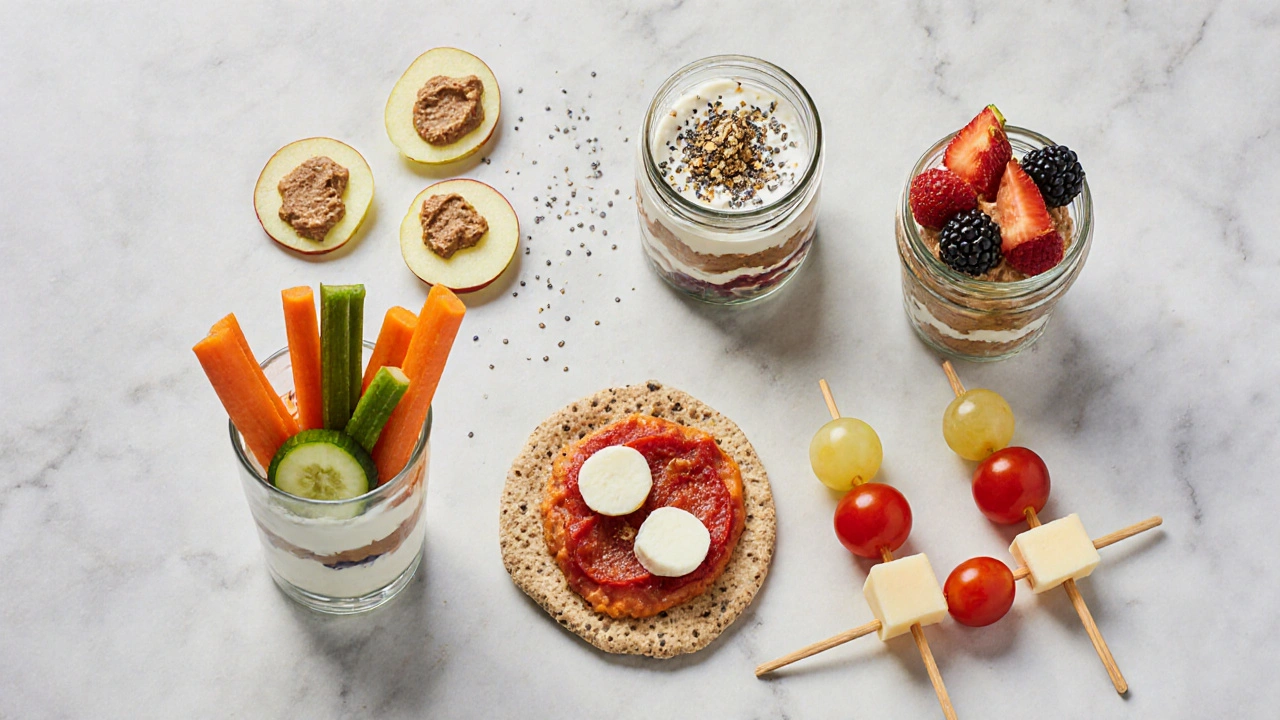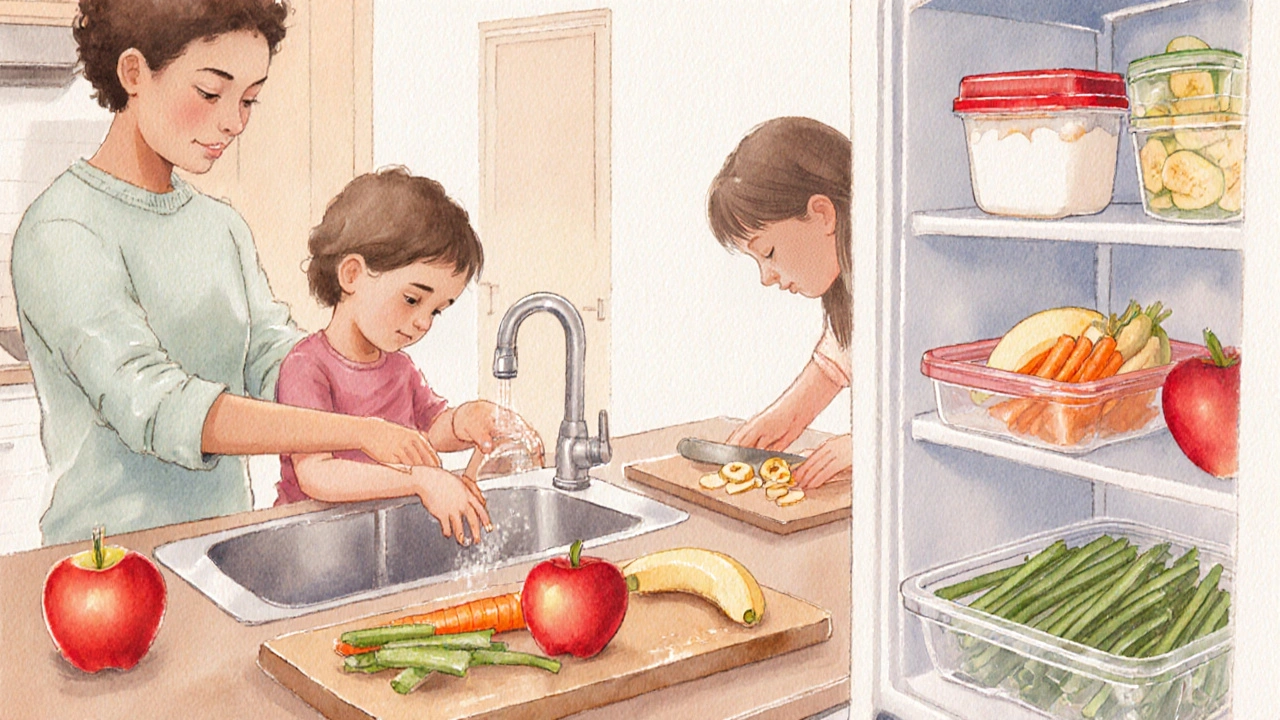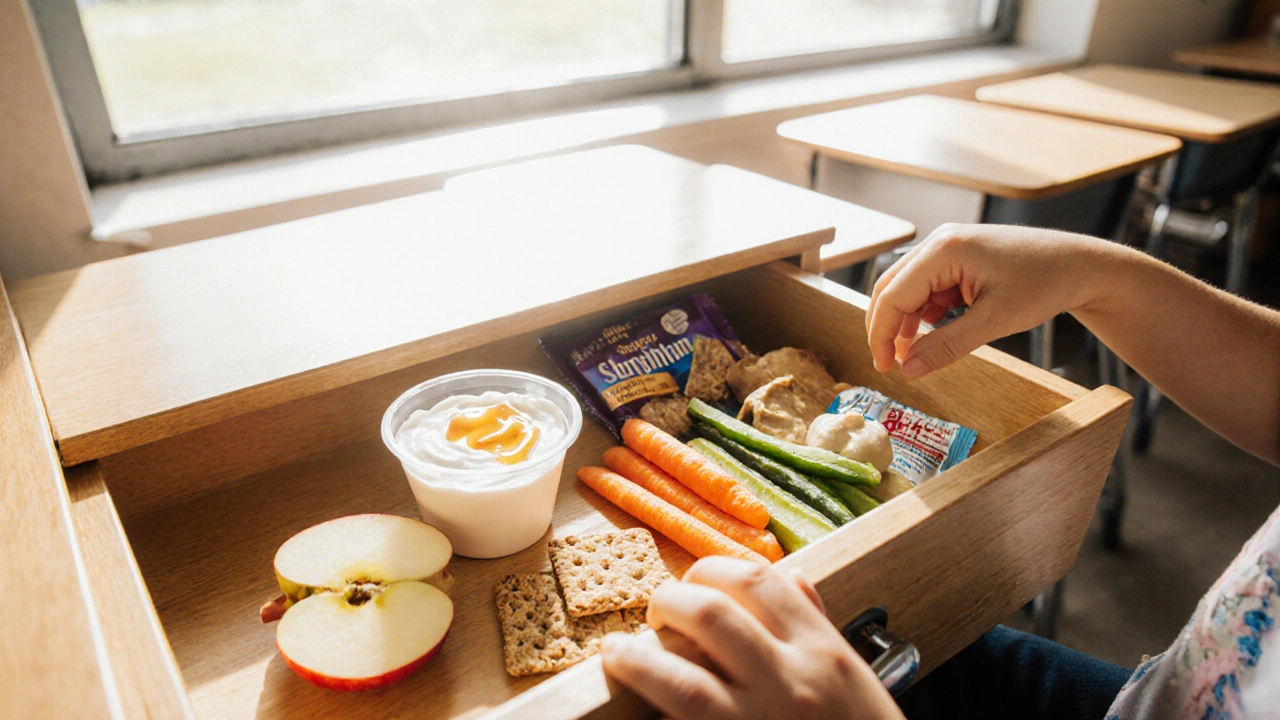Snack Nutrition Calculator
Build Your Healthy Snack
Your Snack Components
Nutrition Summary
Calculate your snack by adding components above
When it comes to growing kids, Nutritious Snacks for Children are the small bites that pack big nutrition. Parents often wonder how a quick snack can power a school day, keep energy steady, and still be tasty. The good news? You don’t need a culinary degree or a grocery‑store raid. With a handful of simple rules and a few go‑to ingredients, you can turn the snack drawer into a health‑boosting station.
Why Snack Choices Matter
Kids burn energy faster than adults. A six‑year‑old can burn 400‑600 calories a day just from playing, while brain development uses roughly 20% of that energy. When the blood‑sugar dip hits after a morning meal, a smart snack refuels the brain, improves focus, and prevents the cranky "hangry" moments that teachers see in the classroom.
Research from the Australian Institute of Health and Welfare shows that children who eat a balanced snack twice a day are 30% less likely to develop overweight issues by age 10. The secret isn’t magic-it’s the mix of protein, fiber, and healthy fats that slows glucose spikes and keeps hunger at bay.
How to Pick Truly Nutritious Snacks
- Fruit - fresh, frozen, or dried (without added sugar). Apples, berries, and banana slices give natural sugars, vitamins, and fiber.
- Greek Yogurt - rich in calcium and protein. Choose plain varieties and add a drizzle of honey or a sprinkle of nuts.
- Whole Grain Crackers - provide complex carbs and fiber that release energy slowly.
- Vegetable Sticks - carrots, cucumber, bell pepper. Pair with hummus for extra protein.
- Protein Bars - look for bars with ≤5 g added sugar and at least 10 g protein per serving.
Mixing at least two of these groups (fruit + protein, grain + veggies) creates a balanced snack that covers the macronutrient spectrum.
Quick healthy snacks Ideas You Can Prep in Five Minutes
- Apple‑Nut Butter Bites: Slice an apple, spread a thin layer of almond butter, and sprinkle with chia seeds.
- Yogurt Parfait: Layer plain Greek yogurt, a handful of mixed berries, and a drizzle of homemade granola (oats, cinnamon, a pinch of honey).
- Veggie‑Hummus Cups: Fill small resealable cups with sliced carrots, cucumber, and a dollop of hummus on top.
- Whole Grain Mini‑Pizza: Top a whole‑grain pita with tomato sauce, shredded mozzarella, and thinly sliced bell peppers. Warm for 2 minutes.
- Cheese‑and‑Fruit Skewers: Alternate cherry tomatoes, cheese cubes, and grapes on a child‑safe skewer.
All of these can be assembled after school or packed the night before, so mornings stay stress‑free.

Portion Sizes and Sugar Guidelines
The Australian Dietary Guidelines recommend that added sugars make up no more than 10% of a child’s total daily energy intake. For a typical 1,800‑calorie diet, that’s about 45 g of added sugar - roughly 11 teaspoons.
Here’s a quick cheat sheet:
| Snack | Key Nutrients | Added Sugar (g) | Prep Time | Age Suitability |
|---|---|---|---|---|
| Apple‑Nut Butter Bites | Fiber, Vitamin C, Healthy Fats | 0 | 5 min | 3‑12 yr |
| Greek Yogurt Parfait | Protein, Calcium, Antioxidants | 2 (honey) | 5 min | 4‑14 yr |
| Veggie‑Hummus Cups | Fiber, Iron, Plant Protein | 0 | 5 min | 2‑12 yr |
| Whole Grain Mini‑Pizza | Complex Carbs, Calcium | 4 (sauce) | 7 min | 5‑12 yr |
| Cheese‑Fruit Skewers | Protein, Vitamin A, Potassium | 0 | 5 min | 3‑10 yr |
Notice how most options stay under 5 g of added sugar per serving. When you do reach for a sweet treat, pair it with protein (like a handful of nuts) to blunt the spike.
Planning and Preparing Snacks Ahead of Time
Consistency is the hidden ingredient. Set aside 30 minutes on a weekend to wash, chop, and portion snacks into reusable containers. Here’s a simple workflow:
- Pick a day - Saturday morning works best for most families.
- Gather fresh produce based on the week’s menu (e.g., carrots for veggie sticks, apples for slices).
- Wash everything thoroughly; a quick dip in a vinegar‑water solution kills surface bugs.
- Slice, portion, and label containers with dates. Use BPA‑free containers or reusable silicone bags.
- Store a “snack station” at eye level in the fridge so kids can grab a healthy option without adult help.
When snacks are visible and easy, children learn to make better choices on their own.

Common Pitfalls and How to Avoid Them
- Relying on pre‑packaged “kids’ snacks.” Many contain hidden sugars, refined flours, and artificial colors. Read the ingredient list - the first three items should be recognizable foods.
- Skipping protein. A snack that’s only carbs (like a plain biscuit) can cause a rapid rise and fall in blood sugar. Add a protein source - nut butter, cheese, or a boiled egg.
- Portion blindness. Kids often think “bigger is better.” Use measuring spoons or a digital scale to keep servings realistic (e.g., 1 ½ cups of sliced fruit, ¼ cup of yogurt).
- Ignoring hydration. Sometimes thirst masquerades as hunger. Keep a water bottle handy and teach kids to sip regularly.
Addressing these issues early builds lifelong habits and reduces the chance of later diet‑related health problems.
Frequently Asked Questions
How many snacks should a primary‑school child have each day?
The Australian Dietary Guidelines suggest two to three short snacks between main meals, each providing about 150‑200 calories and a mix of protein, fiber, and healthy fats.
Are dried fruits a good snack choice?
Dried fruits are nutrient‑dense but also sugar‑concentrated. Choose unsweetened versions and limit portions to a small handful (about ¼ cup). Pair with a protein source to balance the glycemic impact.
What’s a quick, allergy‑safe snack for kids with nut sensitivities?
Try sun‑flower seed butter on whole‑grain toast, or a cheese‑and‑crackers combo using certified nut‑free products. Fresh fruit or veggie sticks with hummus made from chickpeas are also safe.
How can I involve my child in snack preparation?
Give them age‑appropriate tasks: washing fruit, spreading nut/seed butter with a butter knife, or assembling a parfait in a clear cup. This hands‑on time turns snack time into a learning moment and boosts willingness to eat what they helped make.
Should I count calories for my child’s snacks?
Instead of strict calorie counting, focus on nutrient quality and portion size. A balanced snack meeting the protein‑fiber‑fat rule will naturally stay within a healthy calorie range for most children.
With the right ingredients, a little planning, and a dash of creativity, snack time can become a powerful tool for growth, learning, and good mood. Start small, experiment, and watch your children thrive.
